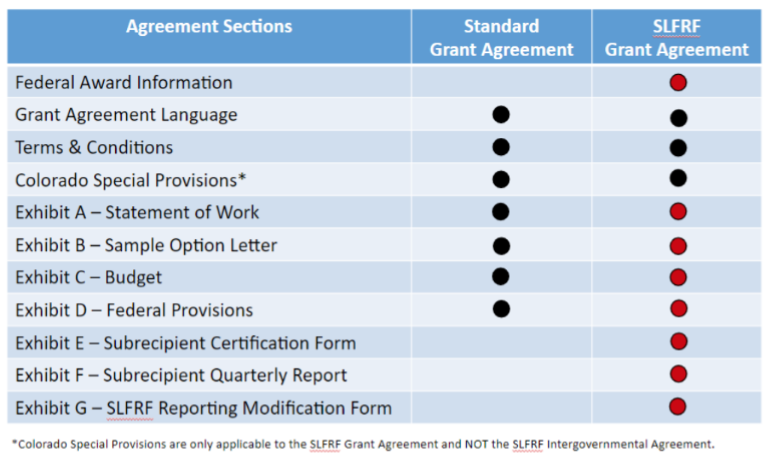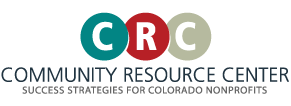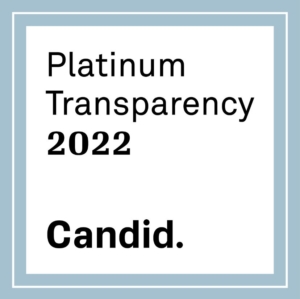Section 3: The Nonprofit SLFRF Grant Reporting Process
The SLFRF Grant Agreement:
If selected for SLFRF funding, a grant agreement will be produced by the SLFRF government recipient that is acting as a pass-through agency of the federal ARPA funds to the nonprofit organization, or subrecipient. It is critical that this agreement is reviewed in detail, as this includes the terms, conditions, and responsibilities of the subrecipient and recipient. An agreement for SLFRF monies incorporates all of the SLFRF specific elements as required by the US Treasury.
The Colorado Office of the State Controller (OSC), maintains all of the forms and templates for state agencies to use regarding the administration of these funds. (https://osc.colorado.gov/american-rescue-plan-act) Also on their website are helpful videos and tools to better understand the documents.
Common Elements of the State SLFRF Grant Agreement
Though no two SLFRF grant agreements will be exactly the same, there are common and specific elements, which include:
- Cover Page – addresses the intent of the agreement and establishes the exhibits and order of precedence. On page two, the Federal Award information has been pre-filled with the Colorado SLFRF funding information specific to the originating federal award.
- Signature Page – the grant agreement must be fully executed by both the state agency and the subrecipient. Agencies must have the subrecipient signature that acknowledges the additional terms and conditions of SLFRF funding.
- Agreement Terms – this section outlines the terms of the agreement between the recipient and subrecipient. It includes the following information:
- PARTIES
- TERM AND EFFECTIVE DATE
- DEFINITIONS
- STATEMENT OF WORK
- PAYMENTS TO GRANTEE
- REPORTING – NOTIFICATION
- GRANTEE RECORDS
- CONFIDENTIAL INFORMATION-STATE RECORDS
- CONFLICTS OF INTEREST
- INSURANCE
- BREACH OF AGREEMENT
- REMEDIES
- DISPUTE RESOLUTION
- NOTICES AND REPRESENTATIVES
- RIGHTS IN WORK PRODUCT AND OTHER INFORMATION
- GENERAL PROVISIONS
- COLORADO SPECIAL PROVISIONS (COLORADO FISCAL RULE 3-3)
- Exhibits and Attachments
- Exhibit A, Statement of Work – includes the deliverables, timeline and progress markers of the project
- Exhibit B, Sample Option Letter – can be used if necessary to change the terms of the agreement and must be signed by the recipient
- Exhibit C, Budget – is where the project budget is detailed. The program budget MUST be broken out by US Treasury Expenditure Category approved category number and name, which aligns to the eligible uses of SLFRF monies. For example: “2.10: Assistance to Unemployed or Underemployed Workers.” This exhibit is mandatory and will be subject to state monitoring.
- Exhibit D, Federal Provisions – includes the current reporting requirements and details the deadlines for when data must be submitted to the state granting agency.
- Exhibit E, Agreement with Subrecipient of Federal Recovery Funds – these certification forms must be completed and signed by a person who is an authorized signatory from the subrecipient organization, and tracks that the entity is aware it is receiving federal funds and that in doing so, there are specific requirements. Some of the certifications to be a subrecipient include ensuring a drug-free workplace, ensuring civil rights protections for employees and program participants, and avoiding lobbying or political activities when paid with federal funds. This agreement should be read in great detail.
- Exhibit F, SLFRF Subrecipient Quarterly Report – details all of the expenditure categories and associated reporting requirements. Subrecipients will only need to report on those relevant to their project.
- Exhibit G, Sample SLFRF Reporting Modification Form – this form will be used to notify agencies and subrecipients of changes in reporting requirements that happen after the grant agreement has been fully executed.
SLFRF Grant Agreement Sections Table
This chart indicates the differences between the standard Grant Agreement issued to organizations (subcontractors) through the State of Colorado, and the Grant Agreement used for any SLFRF grants. This chart, as well as further guidance, can be found on the Office of the State Controller’s webpage, under: SLFRF Grant Guidance, training and resources.
 Chart Source: Department of Personnel & Administration (DPA) SLFRF GRANT AGREEMENT TEMPLATE RESOURCE DOCUMENT
Chart Source: Department of Personnel & Administration (DPA) SLFRF GRANT AGREEMENT TEMPLATE RESOURCE DOCUMENT
The Reporting Process:
SLFRF reporting requirements are specific, and it is the responsibility of SLFRF granting agencies to clearly communicate them to their grantees, or subrecipients. All SLFRF grant awards and reporting requirements will tie directly back to the four statutory eligible uses of SLFRF American Rescue Plan Act dollars.
SLFRF Compliance and Reporting Guidance
The SLFRF Compliance and Reporting Guidance was developed to support government recipients in complying with the Final Rule and provides additional detail and clarification for each recipient’s compliance and reporting responsibilities under the SLFRF program. The guide has two parts:
1. General Guidance: This section provides an orientation to recipients’ compliance responsibilities and Treasury’s expectations and recommends best practices where appropriate under the SLFRF program.
2. Reporting Requirements: This section provides information on the reporting requirements for the SLFRF program.
The US Treasury’s Final Rule outlines all of the compliance standards for the SLFRF including eligible use categories, restrictions on use of funds, reporting requirements, and subrecipient monitoring.
According to the Final Rule, and explained in the Compliance and Reporting Guidance, generally, recipients must submit one initial interim report, quarterly or annual project and expenditure reports which include subaward reporting, and in some cases annual recovery plan reports.
Common Elements of the SLFRF Subrecipient Reporting Process
The recipient of SLFRF is required to manage and monitor their subrecipients to ensure compliance with requirements of the SLFRF award. This includes developing written policies and procedures for subrecipient monitoring and risk assessment, and maintaining records of all award agreements identifying or otherwise documenting subrecipients’ compliance obligations. Specifically, the recipient must clearly identify to the subrecipient:
- That the award is a subaward of SLFRF funds
- Any and all compliance requirements for use of SLFRF funds
- Any and all reporting requirements for expenditures of SLFRF funds
- Exhibit D, Federal Provisions, Section 8 in the SLFRF grant agreement will include the current reporting requirements and details the deadlines for when data must be submitted to the state granting agency.
- Most data are due no later than 10 days following each quarter end. SAM information for subrecipients and any additional subrecipients is due no later than 5 days after the end of the month the award was executed.
- Some narrative information, primarily on project planning, demographics and evaluation, is due upon the effective date of the grant. Financial data is due from agencies to OSC within the first two weeks following quarter end, and performance metrics will be due to OSC approximately 20 days after quarter end.
In general, recipients will be asked to provide the following information to the US Treasury for each grant equal to or greater than $50,000:
- Subrecipient identifying and demographic information (e.g., UEI/TIN number and location)
- Award number (e.g., Award number, Contract number, Loan number)
- Award date, type, amount, and description
- Award payment method (reimbursable or lump sum payment(s))
- Primary place of performance
- Related project name(s)
- Related project identification number(s) (created by the recipient)
- Period of performance start date
- Period of performance end date
- Quarterly obligation amount
- Quarterly expenditure amount
- Project(s)
- Additional programmatic performance indicators for select expenditure categories
Select Expenditure Categories
The Select Expenditure Categories are specific and designated outcomes and metrics, which correspond to the four statutory eligible uses of SLFRF monies.
- Sub-recipients must track these outcomes and metrics, as determined by the recipient, and submit quarterly reports to the recipient which include:
- Budget charts
- Expended funds
- Outcomes achieved
-
Outcomes & Metrics Required by Colorado Dept. of Labor & Employment for Career Navigation and Coaching Staff funded projects
This is an example from an RFA issued by the Colorado Workforce Development Council, for a grant opportunity funded by SLFRF dollars. As you can see, the following metrics have been determined and clearly communicated by the state agency, or recipient, in accordance with the guidance issued by the US Treasury. For this SLFRF grant opportunity, these will be the reporting metrics required of the sub-recipient for monitoring and reporting. They include:
- Training enrollment
- Training completion
- Credentials Earned
- Individuals upskilled (Demographic data, Education Level, Currently Employed, etc)
- Number of individuals with no prior career coaching experience engaging in sessions
- Number of individuals returning to coaching sessions after completion of first session
- Job Placement
- Increase in wages
- Awareness of local and state resources for training and job placement
- Number of in person and virtual sessions held, total
- Grantees will also be asked to provide impact narratives, summaries of lessons learned, and outcome narratives. Quarterly report templates will be provided by CWDC.
- All grantees must meet expenditure deadlines and reporting deadlines outlined in the contracting process.
Grantees will also be asked to provide impact narratives, summaries of lessons learned, and outcome narratives. Quarterly report templates will be provided by CWDC. All grantees must meet expenditure deadlines and reporting deadlines outlined in the contracting process.
How does reporting happen? Because of the multiple layers of submittal, subrecipients must complete their quarterly reports and submit their data to the state funding agency within 10 days following the end of each quarter. Then, the granting agency will submit the data to the Office of the State Controller, or OSC, who will submit it to the Treasury. After subrecipients submit their quarterly report workbook to the funding agency, the state agency will summarize all agency data and submit it to the OSC.
The SLFRF Subrecipient Quarterly Report Workbook
The SLFRF Subrecipient Quarterly Workbook is the document that contains all the selected expenditure categories of SLFRF funding for each eligible use of funding. Because these metrics are standardized by the US Treasury, common data is being collected across the country from recipients of SLFRF allocations that will demonstrate the far-reaching impacts of these American Rescue Plan dollars.
Grantees must use the SLFRF Subrecipient Quarterly Report Workbook to report to the recipient within ten (10) days following each quarter ended September, December, March and June.
This worksheet, and the video below, outlines the specific metrics can be used and must be collected and reported to the US Treasury. To replace lost public sector revenue, to respond to the far-reaching public health and negative economic impacts of the pandemic, to provide premium pay for essential workers, and to invest in water, sewer, and broadband infrastructure.
This list is extensive, and it is important to remember that the recipient of SLFRF monies will use this worksheet to determine the reporting requirements that will be then communicated to the subrecipient. The subrecipient is only required to report on the outcomes and metrics as directed in their grant agreement.

